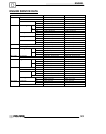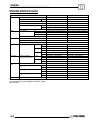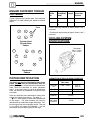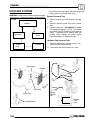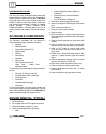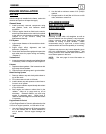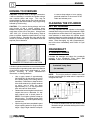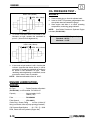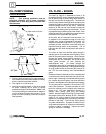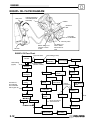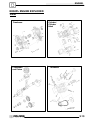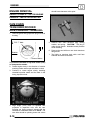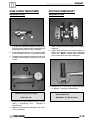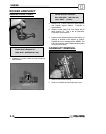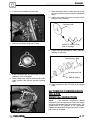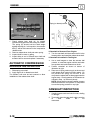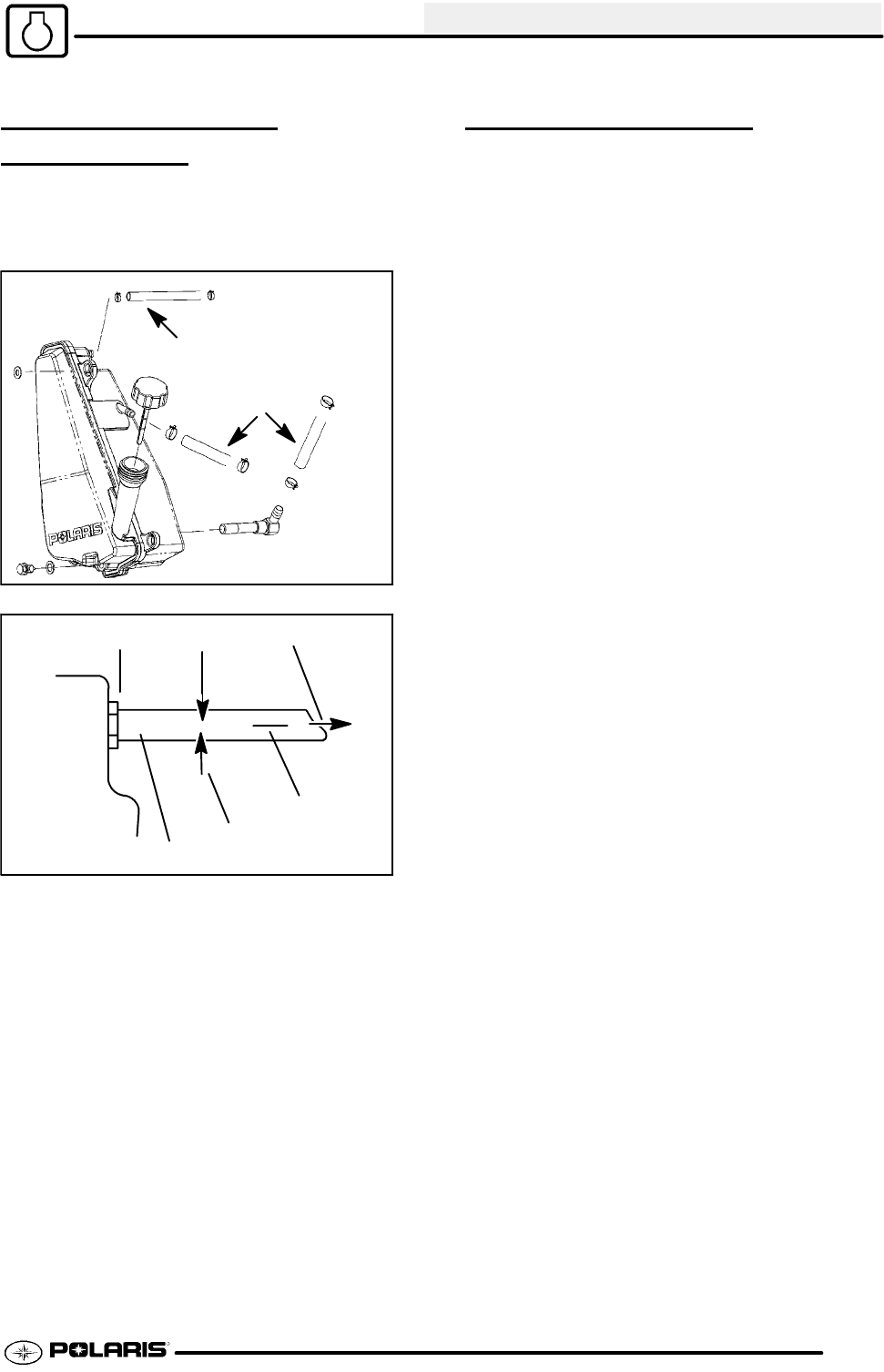
ENGINE
3.11
OIL PUMP PRIMING
PROCEDURE
NOTE: This priming procedure must be
performed whenever the oil hose connection
between the oil tank and pump inlet has been
disconnected.
Oil Lines
To Engine
(A) Vent Hose to Air Box
Slit
Oil Tank
(A) Vent Hose
To Air Box
Pinch Off
2I
Approx.
1. Clamp or pinch off vent line (A) approximately 2I
from oil tank to avoid the end of oil tank vent fitting,
and the vent line’s pressure relief slit
2. Run engine for 10--20 seconds.
3. Remove the vent line clamp. A rush of air should
be heard, indicating the oil pump is properly
primed and ready for field operation. Note: If the
line is bled properly you should hear air release, if
you do not hear air the line has not bled. The oil
pump will now be properly primed and ready for
field operation.
OIL FLOW -- EH50PL
The chart on Page 3.12 describes the flow of oil
through the EH50PL engine. Beginning at the oiltank,
the oil flows through a screen fitting in the bottom of
the tank and into the oil supply hose. The feed side
of the oil pump draws oil through the hose and into the
crankcase oil gallery, and then pumps the oil through
another passage to the one way valve. (When the
engine is off, the one way valve closes to prevent oil
in the tank from draining into the crankcase.) The oil
is pumped through a delivery pipe to theoil filter. If the
oil filter is obstructed, a bypass valve contained in the
filter allows oil to bypass the filter element.
At this point, the oil is diverted in two directions. Oil
is supplied to the camshaft through the left front
cylinder stud, and an oil passage in the head. Oil
enters the camshaft through the PTO (L) journal. The
camshaft journals, cam lobes, and rocker arms are
lubricated through holes in the camshaft. The oil
lubricates the cam chain and sprocket and drains to
the sump.
The other oil path from the filter leads through a
delivery pipe to the crankcase main oil gallery, which
leads to the stator plate oil passage. Here it passes
through the slotted friction bearing (located in the
stator plate) into the crankshaft. An oil seal on the
stator plate prevents oil from entering the
stator/flywheel area. Oil travels through the
crankshaft to the crank pin, lubricating the connecting
rod large end bearing directly. Oil also passes through
an oil jet (drilled orifice) in the end of the crank pin to
the PTO end main bearings and counterbalancer
gears.
Residual oil from the lubrication of the crankshaft and
connecting rod indirectly lubricates the cylinder wall,
piston, rings, connecting rod small end bearing, piston
pin, oil/water pump drive gears, cam chain and drive
sprocket, and Magneto end crankshaft main bearing.
The one-way valve is located on the front left (PTO)
side of the crankcase. The valve prevents oil in the
tank from draining into the engine sump when the
engine is off. The valve mechanism consists of a
plunger, return spring, guide plug, and sealing
washer. When the engine is running, oil pressure lifts
the plunger off the seat, allowing oil flow. When the
engine is off, spring pressure forces the plunger
against the oil passage seat, preventing oil flow from
the tank to the sump. The one-way valve requires
very little maintenance. If engine oil drains into the
sump when the engine is off, inspect the valve sealing
surface for debris or damage. Inspect the return
spring for distortion or damage.



